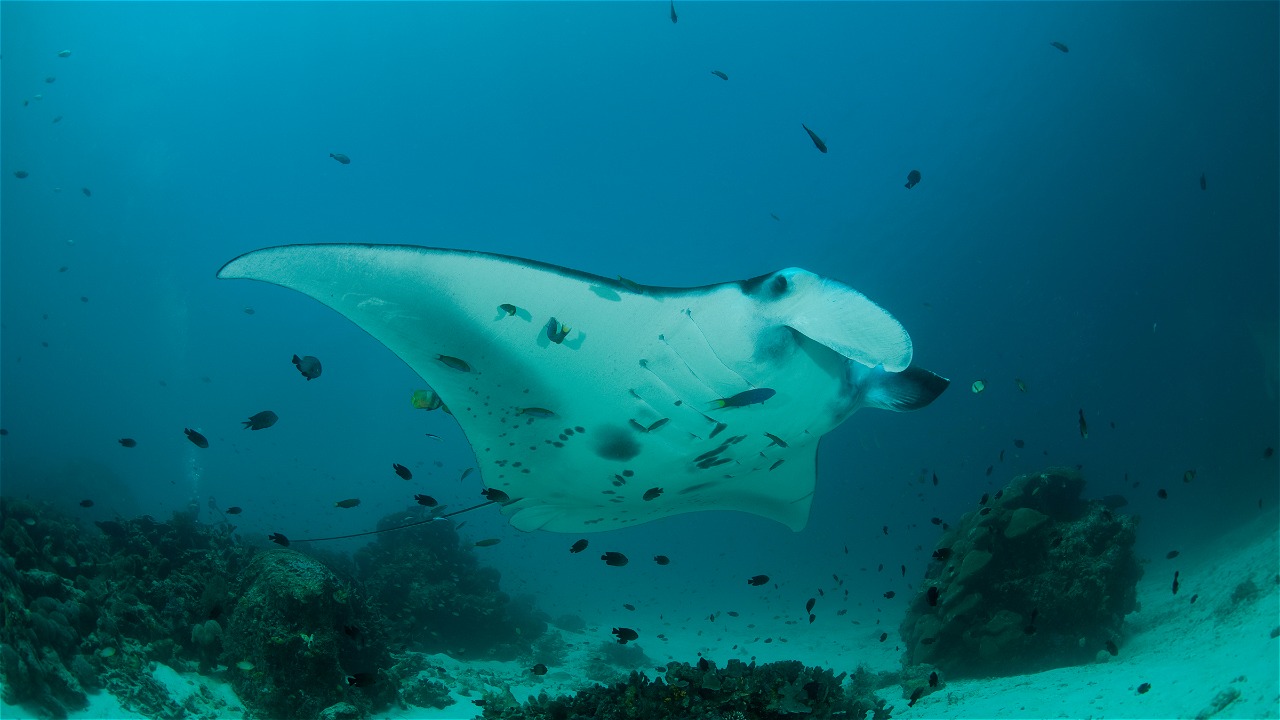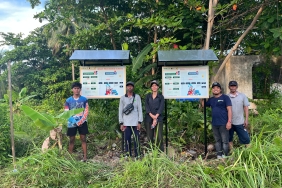INAUGURATION OF MANTA RAY PROTECTION LAW IN INDONESIA
By Ranny Ramadhani
Two species of manta rays, namely Manta alfredi (reef manta) and Manta birostris (oceanic manta) are now fully protected. The full protection is contained in the Minister of Maritime Affairs and Fisheries Decree No. 4/2014 on the Determination of Full Protection Status of Manta Rays, which was launched last Monday (24/2). Many conservation practitioners and researchers attended the launch, including representatives from the Indonesian Institute of Sciences (LIPI), national and international NGOs, and the media.
In addition to the launch, a talk show was also held on the intricacies of the manta ray protection process, such as the importance of mantas in a live condition that can generate up to 90 times the income compared to dead mantas that may be sold for only Rp 1,000,000. Manta rays can attract the attention of underwater tourism lovers so that they can increase foreign exchange in the tourism sector.
There are only two species of manta rays (manta rays), namely Manta alfredi (reef manta) and Manta birostris (oceanic manta) which is a cartilaginous fish that has a size of up to approximately 6 meters. Manta rays are found in several waters in Indonesia, such as Weh Island, Derawan, Bali, Komodo Islands, Raja Ampat Islands, and also other waters that are the migration path of animals that can weigh up to thousands of kilos. According to a researcher from the Research and Development Center - Ministry of Marine Affairs and Fisheries (Litbang - KKP), Mr. Dharmadi, in the last 10 years the decline in the number of manta rays could reach 30%. Some areas in Indonesia, such as Tanjung Luar (Lombok) and Larantuka used to take ray gills for medicine which were then exported to China and Taiwan. In addition, manta ray skin is also used to make wallets and other crafts. The body is also sometimes consumed for daily food. Manta rays can live up to 40 years and can only produce 1 manta ray juvenile every 2-5 years. So for each manta approximately can only give birth to 8-10 mantas during its life cycle. Therefore, it is appropriate that manta rays are protected in Indonesia.
WWF-Indonesia, which was also present at the launching of manta ray protection yesterday, in the future will support research efforts, development of bycatch mitigation technology, regional arrangements in the mechanism of Marine Protected Area for Fisheries (MPA for Fisheries), as well as connectivity between MPA areas in ensuring the health of the manta ray ecosystem or habitat. Of course, there must also be a commitment from all parties to implement monitoring in the field, and most importantly, the right solution for fishermen or coastal communities who use manta rays for their livelihoods. So that not only manta rays remain sustainable, the community is also expected to remain prosperous.
One type of manta ray (manta alfredi) in Komodo National Park





